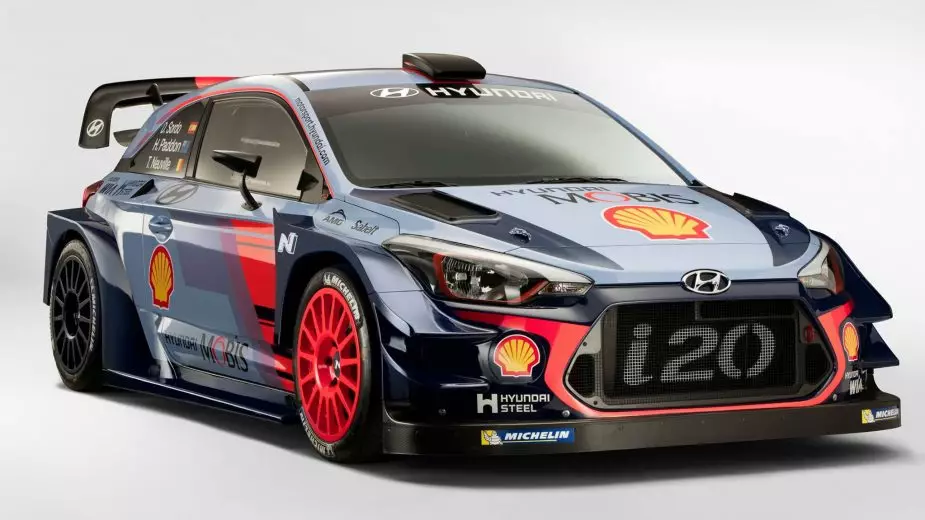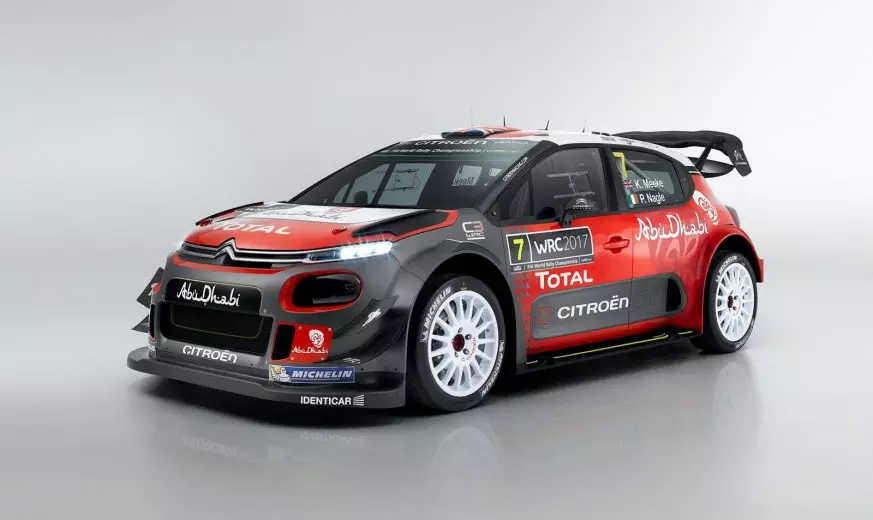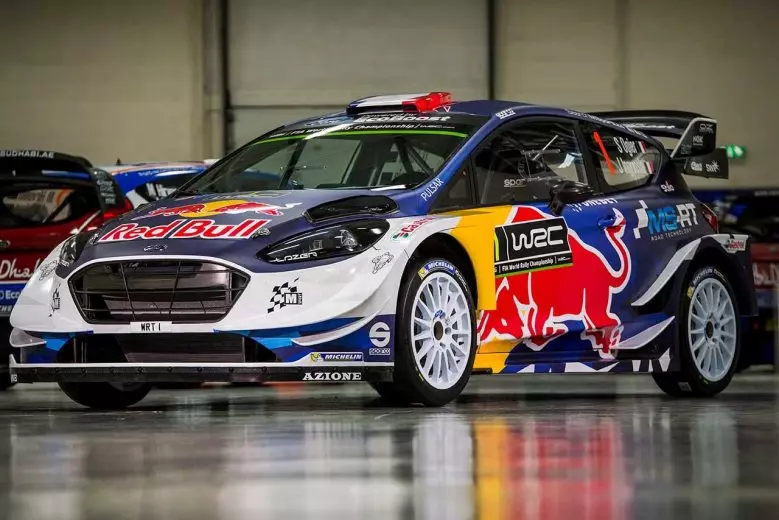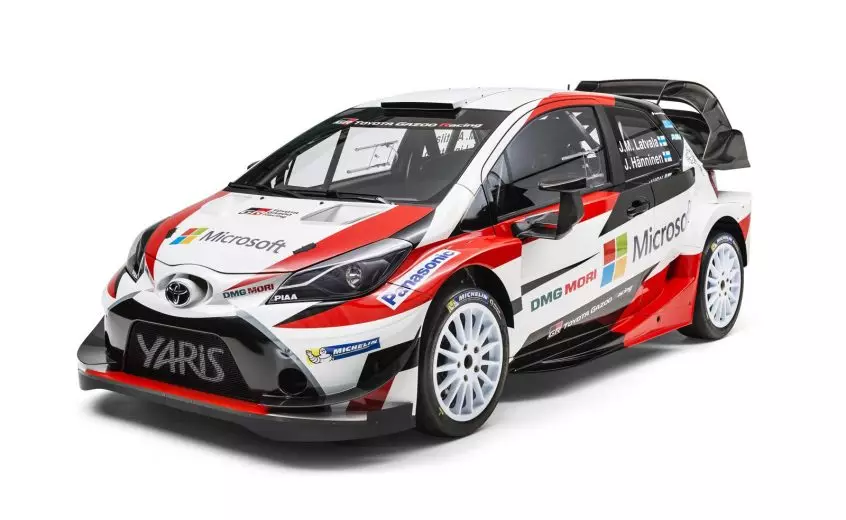This year the World Rally Championship brought many new features regarding WRC category machines.
Aiming to raise not only the performance but also the spectacle, compared to last year's cars, the new WRC machines underwent profound changes, recalling the extinct Group B. Of course, the new WRCs are infinitely faster and more effective than these.
To increase performance, power increased. In mechanical terms, among several changes, one of the most important was the change in the diameter of the turbo restrictor, which went from 33 to 36 mm. Thus, the power of the WRC's 1.6 Turbo engines rose to 380 horsepower, 60 horsepower more than last year's models.
This increase in power also witnessed a slight reduction in the permitted regulatory weight and an active central differential was added. Therefore, the new WRCs walk more, weigh less and have more traction. Sounds good, doesn't it?
Outwardly, the differences are obvious. The new WRCs are substantially wider and come with aerodynamic paraphernalia that doesn't clash with what we see on WEC championship machines. Visually they are much more spectacular. The end result is machines that are more efficient and substantially faster than last year's.
In 2017 there are four applicants for the title: Hyundai i20 Coupe WRC, Citroën C3 WRC, Ford Fiesta WRC and Toyota Yaris WRC . All of them have already guaranteed victories in this year's World Cup, which attests to the competitiveness of the cars and the WRC.
Which one will win the Rally de Portugal? Let's know the technical file of each one.
Hyundai i20 Coupe WRC

| Motor | In-line 4 cylinders, 1.6 liters, Direct Injection, Turbo |
|---|---|
| Diameter / Course | 83.0 mm / 73.9 mm |
| Power (max) | 380 hp (280 kW) at 6500 rpm |
| Binary (max) | 450 Nm at 5500 rpm |
| Streaming | four wheels |
| Speed Box | Sequential | Six speeds | Tab actuation |
| Differential | Hydraulic Power Station | Front and back - mechanic |
| clutch | Double ceramic-metal disc |
| Suspension | MacPherson |
| Direction | Hydraulically assisted rack and pinion |
| brakes | Brembo Ventilated Discs | Front and rear – 370 mm asphalt, 300 mm earth – Air-cooled four-piston calipers |
| Wheels | Asphalt: 8 x 18 inches | Earth: 7 x 15 inches | Michelin tires |
| Length | 4.10 m |
| Width | 1,875 m |
| Between axles | 2.57 m |
| Weight | 1190 kg minimum / 1350 kg with pilot and co-pilot |
Citroën C3 WRC

| Motor | In-line 4 cylinders, 1.6 liters, Direct Injection, Turbo |
|---|---|
| Diameter / Course | 84.0 mm / 72 mm |
| Power (max) | 380 hp (280 kW) at 6000 rpm |
| Binary (max) | 400 Nm at 4500 rpm |
| Streaming | four wheels |
| Speed Box | Sequential | six speeds |
| Differential | Hydraulic Power Station | Front and rear - self-blocking mechanic |
| clutch | Double ceramic-metal disc |
| Suspension | MacPherson |
| Direction | Rack and pinion with assistance |
| brakes | Ventilated Discs | Front – 370 mm asphalt, 300 mm earth – Water-cooled four-piston calipers | Rear – 330 mm asphalt, 300 mm earth – Four-piston calipers |
| Wheels | Asphalt: 8 x 18 inches | Earth and Snow: 7 x 15 inches | Michelin tires |
| Length | 4,128 m |
| Width | 1,875 m |
| Between axles | 2.54 m |
| Weight | 1190 kg minimum / 1350 kg with pilot and co-pilot |
Ford Fiesta WRC

| Motor | In-line 4 cylinders, 1.6 liters, Direct Injection, Turbo |
|---|---|
| Diameter / Course | 83.0 mm / 73.9 mm |
| Power (max) | 380 hp (280 kW) at 6500 rpm |
| Binary (max) | 450 Nm at 5500 rpm |
| Streaming | four wheels |
| Speed Box | Sequential | Six speeds | Developed by M-Sport and Ricardo for hydraulic drive |
| Differential | Active Center | Front and back - mechanic |
| clutch | Multidisc developed by M-Sport and AP Racing |
| Suspension | MacPherson with Reiger Adjustable Shock Absorbers |
| Direction | Hydraulically assisted rack and pinion |
| brakes | Brembo Ventilated Discs | Front – 370 mm asphalt, 300 mm earth – Four-piston calipers Brembo | Rear – 355 mm asphalt, 300 mm earth – Four-piston Brembo calipers |
| Wheels | Asphalt: 8 x 18 inches | Earth: 7 x 15 inches | Michelin tires |
| Length | 4.13 m |
| Width | 1,875 m |
| Between axles | 2,493 m |
| Weight | 1190 kg minimum / 1350 kg with pilot and co-pilot |
Toyota Yaris WRC

| Motor | In-line 4 cylinders, 1.6 liters, Direct Injection, Turbo |
|---|---|
| Diameter / Course | 83.8 mm / 72.5 mm |
| Power (max) | 380 hp (280 kW) |
| Binary (max) | 425 Nm |
| Streaming | four wheels |
| Speed Box | Six speeds | hydraulic actuation |
| Differential | Active Center | Front and back - mechanic |
| clutch | Double disc developed by M-Sport and AP Racing |
| Suspension | MacPherson with Reiger Adjustable Shock Absorbers |
| Direction | Hydraulically assisted rack and pinion |
| brakes | Brembo Ventilated Discs | Front and back – 370 mm asphalt, 300 mm earth |
| Wheels | Asphalt: 8 x 18 inches | Earth: 7 x 15 inches | Michelin tires |
| Length | 4,085 m |
| Width | 1,875 m |
| Between axles | 2,511 m |
| Weight | 1190 kg minimum / 1350 kg with pilot and co-pilot |
